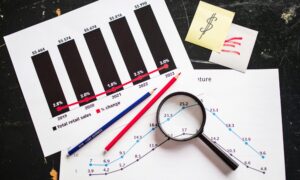In today’s fast-paced financial landscape, credit facilities play a pivotal role in fueling economic growth. Whether it’s a personal loan, a mortgage, or a business line of credit, the efficient allocation of credit is essential for individuals and businesses alike. However, lending institutions have historically faced challenges in assessing credit risk accurately. The emergence of big data analytics has ushered in a new era, transforming the way financial institutions make lending decisions. This article explores the profound impact of big data analytics on credit facilities, shedding light on how this technology is enhancing risk assessment and lending decisions.
Introduction
Understanding Big Data Analytics
Big data analytics involves the collection, processing, and analysis of vast amounts of data to extract valuable insights and patterns. In the context of credit facilities, this data includes information about borrowers’ financial history, behavior, and various external factors that may affect their ability to repay loans. Traditional credit scoring models often rely on limited data points, such as credit scores and income levels, which can result in inaccurate risk assessments. Big data analytics, on the other hand, leverages a wide array of data sources to provide a more comprehensive view of a borrower’s creditworthiness.
Enhanced Risk Assessment
One of the most significant impacts of big data analytics on credit facilities is its ability to enhance risk assessment. By analyzing a diverse range of data points, including social media activity, transaction history, and even GPS data, lenders can gain a deeper understanding of a borrower’s financial behavior. This holistic approach allows lenders to identify potential risks and opportunities that traditional credit scoring models might overlook.
For example, if a borrower has a stable income and a high credit score but frequently makes late payments on utility bills, big data analytics can flag this behavior as a potential red flag. Additionally, analyzing a borrower’s social media presence can provide insights into their lifestyle and spending habits, which can be valuable in assessing their ability to manage debt responsibly.
Improved Fraud Detection
Fraudulent loan applications pose a significant threat to lending institutions. Fraudsters often use stolen identities and fabricated information to secure loans, resulting in substantial financial losses for lenders. Big data analytics can significantly improve fraud detection by cross-referencing loan applications with a vast database of information.
For instance, if a loan application matches the personal information of a known identity theft victim, the system can trigger an alert for further investigation. Similarly, analyzing patterns of loan application behavior, such as multiple applications within a short time frame, can help identify potential fraudsters. By leveraging big data analytics, lending institutions can protect themselves from fraudulent activities and maintain the integrity of their lending processes.
Personalized Lending Decisions
One of the key advantages of big data analytics is its ability to enable personalized lending decisions. Traditional credit scoring models often treat borrowers as homogeneous groups, leading to standardized lending terms. However, not all borrowers are the same, and their unique financial situations should be taken into account.
Big data analytics allows lenders to tailor loan terms to individual borrowers based on their specific financial circumstances. For example, a borrower with a stable job and a history of responsible financial behavior may qualify for a lower interest rate compared to someone with a less favorable financial profile. This personalized approach benefits both borrowers and lenders, as it ensures that borrowers receive loans that are better suited to their needs and financial capacity, while lenders can minimize the risk of defaults.
Speed and Efficiency
In the fast-paced world of finance, speed and efficiency are crucial. Big data analytics accelerates the lending process by automating many of the tasks that were once done manually. For instance, the analysis of bank statements, tax returns, and other financial documents can now be performed by algorithms in a matter of seconds, significantly reducing the time it takes to process loan applications.
Moreover, big data analytics can streamline the underwriting process by flagging applications that require additional scrutiny while quickly approving low-risk applications. This not only speeds up the lending process but also reduces the workload for loan officers, allowing them to focus on more complex cases.
Continuous Monitoring and Risk Management
Big data analytics doesn’t stop at the loan origination phase; it also plays a crucial role in ongoing risk management. Lenders can continuously monitor borrowers’ financial behavior, including changes in income, spending habits, and credit utilization. This real-time monitoring enables lenders to identify early warning signs of financial distress and take proactive measures to mitigate risk.
For instance, if a borrower starts accumulating excessive debt or displays erratic spending patterns, the system can trigger alerts for the lender to reach out and offer assistance or modified repayment plans. This not only helps borrowers avoid default but also helps lenders protect their investments by addressing potential issues before they escalate.
Conclusion
The impact of big data analytics on credit facilities is nothing short of revolutionary. This technology has transformed the way lending institutions assess risk and make lending decisions. By leveraging vast amounts of data, big data analytics enhances risk assessment, improves fraud detection, enables personalized lending decisions, enhances speed and efficiency, and facilitates continuous monitoring and risk management.
As the financial industry continues to evolve, the role of big data analytics in credit facilities is likely to expand further. Lending institutions that embrace this technology stand to benefit from more accurate risk assessments, reduced fraud, and a more efficient lending process. Ultimately, big data analytics is not just a tool for lenders; it is a catalyst for financial empowerment, ensuring that credit facilities are accessible and tailored to the unique needs of borrowers in today’s dynamic financial landscape.



































